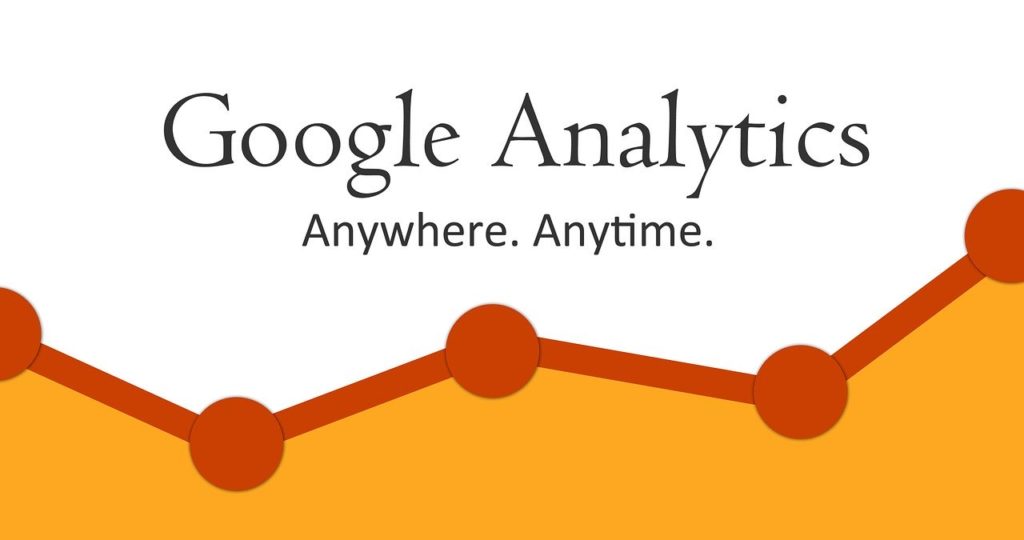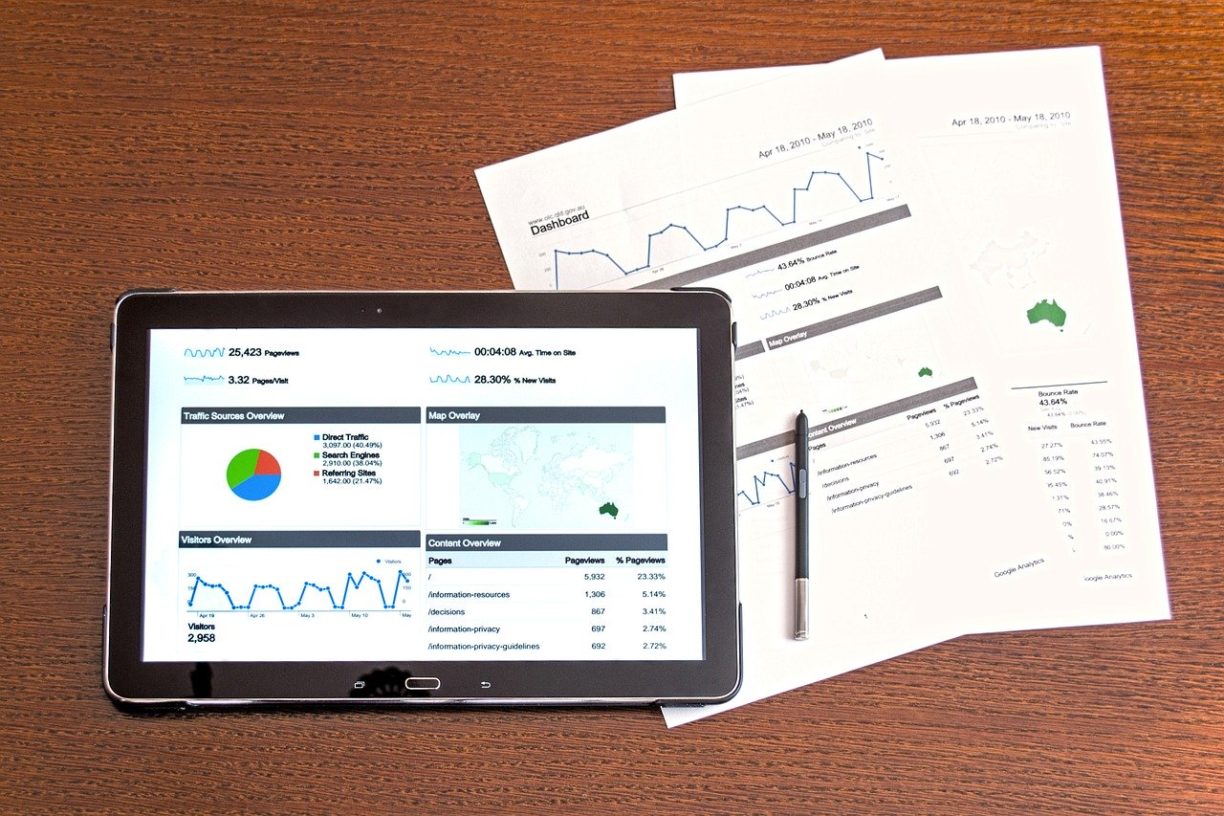The business landscape has changed dramatically over the years. Marketing isn’t what it used to be. It has become highly result-oriented, which means that brands want to see a tangible ROI on what they spend in advertising and marketing. This is precisely why data analytics is at the core of any robust digital marketing strategy.
Regardless of the size of the company you run or the specific industry you’re in, one thing is the same across the board. Using the same old generic approach to draw in customers just won’t fly in this day and age. They are more discerning than ever. They demand more from brands and hold them to a higher standard.
They want a personalized experience – not just once, but every single time they come into contact with a brand. If you don’t take the time to deliver your products and services in a way that fits their needs, they simply move on. And, with so much competition out there, it’s just a matter of time before they find another brand that understands what they expect.
Data-driven marketing is the secret weapon your business needs to survive and thrive in this cut-throat world.
So, what is data analytics, and why does your business need it? This article seeks to explore the answers to these questions in depth.

What Is Data Analytics – A Brief Overview
Data analytics involves analyzing raw data to identify trends, draw conclusions, and answer questions based on the information derived from them. A successful data analytics process paints a clear picture of where you were, where you are, and where you need to be to get the results you want.
Marketing analytics is used to determine the level of success of various marketing efforts for the overall campaign. It helps to determine what’s working and what not in the context of your marketing strategy and how this fits into your company’s business objectives.
Leveraging the right set of data analytics tools allows you to get a deeper insight into the different aspects of your marketing strategies. So, whether it’s your website and social media metrics, competitor analysis, or the actual marketing ROI, it’s all about being able to track the results. That should be at the heart of any marketing process.
Marketing Analytics Tools
Marketing analytics tools are used to collect and measure marketing data to help improve the performance of a website, social media platform, or app. They help track the behavior of leads and customers within the digital channels to gather insights, tie their activities back to revenue, test out new methods and ideas, and generally monitor the activity on the platform.
There are five main types of marketing analytics tools every business needs to optimize its marketing activities.
1. Event-Based Tools
These are also referred to as click analysis tools and are used to monitor the actions of individual users in a platform, website, or app. An event is essentially anything that a company deems important. For instance, if you run an eCommerce website, you might be concerned about conversion events like customers adding items to their shopping carts.
Some of the event-based tools that can help you collect marketing analytics data include web analytics tools, app analytics platforms, data platforms, and marketing automation tools.
Google Analytics
This is perhaps one of the most popular digital analytics software you’ll come across. It is a free service and provides valuable insights on the visitors to your website.

It provides in-depth details like what people do when they get to your site, what pages they view the most, how long they stay there, etc. Understanding the behavior of your prospective and existing customers will help you shape the success strategy of your business, and deliver better results while you’re at it.
Some of the key features of Google Analytics that make it a must-have for every business with a website include:
- It’s free to use. All you have to do is set up a Google Analytics account and copy a small piece of code on to your website
- Allows you to monitor whether your business is on the right track to achieving its revenue goals
- Allows you to build a customized report using the drag-and-drop interface provided
- Easily integrates with other platforms and tools like Google AdWords and Google Search Console
- Has automated data collection and allows you to access reports instantly
- It helps you keep track of the content that receives the highest number of views, likes, and shares. This lets you know the kind of content you should create
- Provides insight into the kind of information visitors look for on your website once they are there
- Provides information on which social media platforms to target with ads
- Provides data on your audiences like their age, gender, location, interest, and browsing device
- Provides insight into why visitors exist your site shortly after visiting a single page
2. Testing Tools
A testing tool, or A/B testing as it is sometimes called, is used to test multiple variants of the different features on a website, social media platform, or app.
For instance, a magazine publication might want to find out if users are more likely to subscribe to their services if the sign-up button is placed on the right side, at the center or on the left side of the screen. That way, they can learn what users like and increase the potential for conversion.
Testing tools are an essential part of the product development process since it allows companies to collect real data and come up with effective ways to improve their product. Some tools work by sending test messages to users of their site, platform, or app.
The five most common messaging channels used for testing are:
- SMS
- In-app notifications
- Push notifications
- Web-hook
These may come as standalone tools or with all-in-one analytics software.
3. Visual Behavior Tools
These provide insight into the sections of the website, social media platform, or app that users spend the most time. It’s almost like looking over your customers’ shoulders to see what content keeps them glued there.
Most of the analytics tools that do this present the data as a heat map highlighting which sections are the most heavily clicked or trafficked. It also allows you to get first-hand data on how far down the pages users scrolled.
Based on this visual behavior data, businesses can restructure and rearrange their digital interface to improve their services and overall customer experience.
Say, for instance, that you have an online clothing store. You discover that you’re getting a lot of returns because several customers seem to be purchasing clothes in the wrong size. A heat map might reveal that the current position of the sizing chart isn’t visible to most of them.
Using this data, you can then place the chart in a location on your website where customers are more likely to see it and reduce the current rate of returns you’re getting on items.
4. Digital Marketing Analytics Tools
This category of tools focuses on collecting data from advertising and marketing channels. They’re classified into five main categories.
Search Engine Optimization Tools
SEO tools, or analytics SEO as they are often called, provide insight into how likely it is for your website content to show up in search engine results pages (SERPs).

They even go a step further to provide recommendations to improve the search ranking of your website, suggest new keywords you can integrate into your content, and allow you to compare your website to those of your higher-ranking competitors.
Google Search Console
This free-to-use tool from Google measures your website’s search traffic and performance to help you fix any issues that could be standing in the way of ranking higher in SERPs.
Some of the top functions of the Search Console include:
- Checking to make sure that Google can find and crawl your website
- Fixing any indexing issues that may be on your site
- Providing search data for your site such as search queries used to show your website in SERPs, how frequently it features on the results pages, the click-through rate for searchers clicking on your site, etc.
- Requesting re-indexing of new or updated webpages
- Showing a list of websites that link back to yours
- Troubleshooting for mobile usability issues, AMP problems, and any other search feature issues
Unlike Google Analytics that focuses on who visits your website, the Search Console zones in on how it appears to individuals searching using certain keywords and phrases. It highlights the possible problematic areas of your site and provides opportunities to improve on them.
Social Media Analytics Tools
As a business owner, you need to harness the power of social media marketing on platforms like Facebook, Instagram, LinkedIn, or YouTube to increase the size of your company’s digital footprint. Social media analytics provide invaluable information to let you know whether your marketing efforts on those channels are yielding any tangible results.
You learn how visitors interact with your page and posts, the kind of content that’s getting the most hits, and how many of your profile viewers convert. That way, you can optimize your content to resonate with your target audience based on the data you get.
Search Engine Marketing Tools
Search engine marketing (SEM) involves using paid advertisements that appear on SERPs to market your business. You would essentially bid on certain keywords that search engine users like those on Google or Bing might enter when looking for certain products/services.
When they do, your ad would appear alongside those results. SEM tools like Google AdWords or Bing Ads provide analytics tools that allow you to research keywords, track your spending, view the ad results in terms of clicks and conversions, come up with A/B test variants, and find various ways to improve the performance of your ad.

Display Ads Analytics Tools
Display advertising or banner advertising is a form of online brand marketing that conveys a commercial message through pictures, videos, animations, logos, or any other graphic format.
It prompts the audience of a website, social media platform or app, to take a specific action, which is usually to click-through to a landing page and then convert by making a purchase or subscribing to a service.
Display ad analytics tools provide data on the number of impressions, clicks, and conversions made to give you information on your ad’s performance and engagement level. That way, you can come up with effective strategies to improve its success rate.
Predictive Analytics Tools
The broad definition of predictive analytics is the use of historical data to generate insights into possible future outcomes using techniques such as data mining, statistical modeling, artificial intelligence, or machine learning.
Predictive analytics in marketing allows you to better identify potential customers and market other products to them that they might be interested in based on their historical buying patterns. It also indicates which products to cross-sell to which customers.
Many data analytics companies have developed predictive-scoring modeling tools. These provide algorithms that score users and prospective customers based on their likelihood to make future purchases or renew subscription-based services.
The Role of Big Data in Marketing Analytics
The best way for small businesses, medium enterprises, and industry leaders alike to improve the effectiveness of their marketing strategies is to take advantage of big data. Three major types are critical to marketing:
- Customer data: This big data category includes behavioral, transactional, and attitudinal metrics derived from various sources like marketing campaigns, websites, social media, points of sale, etc.
- Operational data: This category focuses on objective metrics that measure the effectiveness of marketing operations related to budgetary controls, asset management, resource allocation, etc.
- Financial data: This final category is embedded in a business’ financial systems that measure the company’s financial health. They include sales, revenue, profit metrics, among many others.
Bump-Up Your Marketing ROI
If your marketing efforts cost more than what you’re getting in return, then it’s not a sustainable business strategy both in the short and long term. That’s precisely why you need analytics to measure where you’re going wrong and what you can to improve on it, to outgrow your competitors.
If you have no prior data analytics training, it can be quite difficult to understand how to make sense of all the performance metrics generated on different digital platforms. Get in touch with data analytics consulting professionals and see how you can start tracking your marketing efforts without wasting money in the process.


